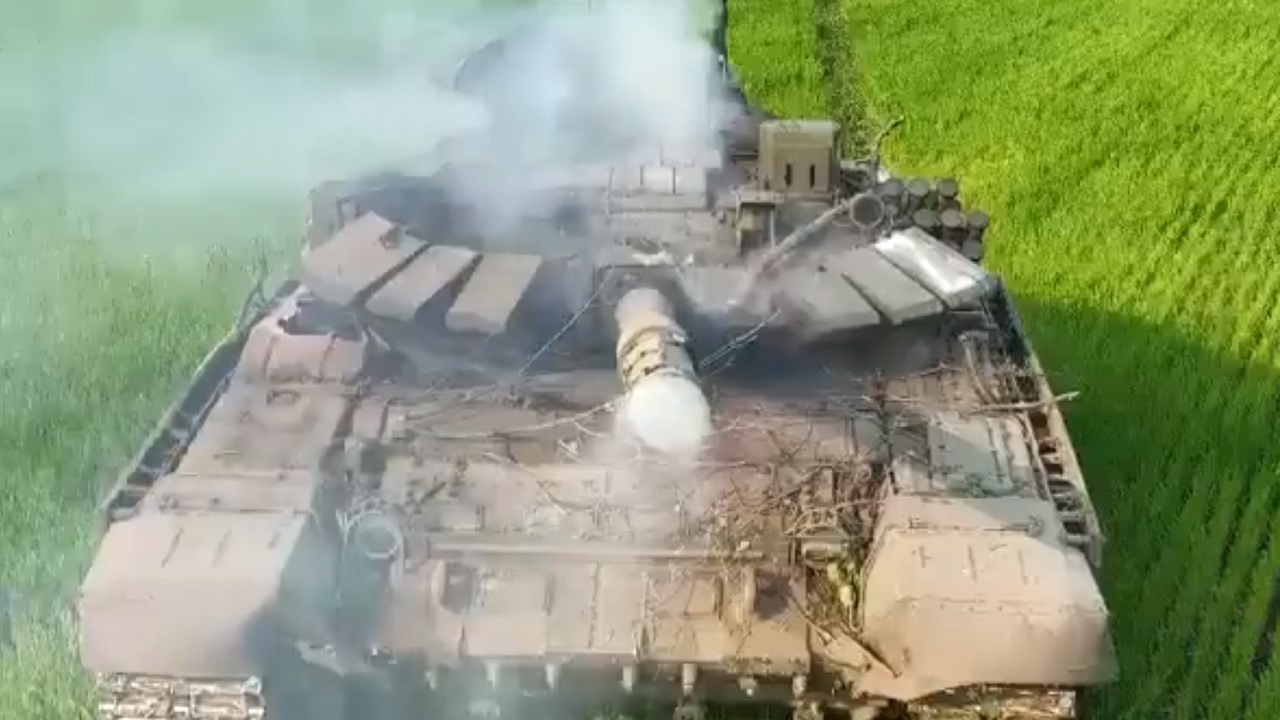Breaching deliberate defenses on the battlefield is one of the most difficult and dangerous things an army can do. During a field exercise more than two-decades ago, I was sitting in the command post of a U.S. mechanized infantry battalion listening to seasoned commanders attempting to maneuver their companies through the “point of penetration” in simulated enemy defenses. Over the radio I heard the frustration, chaos, and embarrassment of what sounded like an impossible task. That memory stayed with me throughout my career.
Breaking through prepared enemy defenses means breaking hell loose, all of it. For an effective defense, the Russians must cover their obstacles—mines, bunkers, “dragon’s teeth,” “hedgehogs,” and tank ditches—with observation and fire (both direct fire with tanks, aviation, Anti-Tank Guided Missiles, quadcopters with RPG grenades duct-taped to them, loitering drones, etc., and indirect fire with artillery). The Ukrainians must suppress all this while their engineers, also known as “sappers,” move forward to clear a lane for the tanks and the infantry fighting vehicles. Explosions. Confusion. Smoke screens. More confusion. If the Ukrainians move too quickly, mines. Too slowly, enemy fire. And all the while their armored vehicles are “buttoned up” (completely closed-up) to prevent damage from artillery and small arms fire, reducing the driver’s and the track commander’s visibility to the equivalent of looking out a submarine’s periscope.
Both sides have already experienced the dangers of attempting to punch through defensive lines. To date, the largest tank battle of the war was in the southeastern town of Vuhledar in early 2023. It was costly for the Russians, losing upwards of 130 tanks and armored vehicles. The commander of the “elite” 155th Separate Guards Marine Brigade from the Russian Pacific Fleet, after seeing his 5000 person unit lose 300 marines per day and dwindle into combat ineffectiveness, simply refused to send his unit back into Vuhledar. Ukraine, too, has been on the wrong side of a sharp learning curve in mechanized warfare.
In what appeared to be the early probing stages of the counteroffensive near the town of Mala Tokmachka in Zaporizhzhia, the Ukrainians lost at least nine U.S. Bradleys and at least one German Leopard tank. Mirroring the Russian’s poor technique in Vuhledar, many of the Ukrainian vehicles were lost because they charged into the same exact Russian kill-box that had just removed some of their armored compadres from the battle. Western tanks can outgun any Soviet-era armor, but there is not a lot you can do about mines, or poor combat decisions.
The Russian army is not an innovative organization, but eventually it learns. It figured out how to neutralize the Turkish Bayraktar TB2 drone that the Ukrainians used with such success early in the war. More recently, the Russians have used electronic jamming to reduce the effectiveness of the much proclaimed U.S. HIMARS artillery. The Ukrainians would be wise not to underestimate the Russians, but to anticipate an evolving enemy.
So what might we expect the Russians to take away from their offensive attempts in Vuhledar? First, constantly replenish minefields, dropping them from the air or using artillery delivered mines. The Ukrainians did this, often in real time, and caught many a Russian track commander by surprise on a route that was just previously “cleared” of mines. Second, ambush. If there are no mines on an open road, you are probably being played. Third, take the high ground. The highlands of Vuhledar offered the Ukrainians a good vantage from which to coordinate their defense. Fourth, as Napoleon said, “Never interrupt your enemy when he is making a mistake.” Stop doing the same thing, at the same place, and experiencing the same result—which is at this point practically a Russian trademark. Lastly, be smart and flexible, a seemingly impossible task for the former Soviet army.
In the world of military strategy none of these aforementioned observations are terribly novel, but the Ukrainians are going to need every bit of skill, luck, and composure to breach the Russian lines while not losing an unacceptable number of soldiers and vehicles. The Russians have had months to prepare the defense. According to Volodymyr Zelensky, the Russians mined 77,000 square miles of the front. In terms of pure manpower, the Russians could have many times the number of Ukrainian troops in country, a partial reversal of the traditional military heuristic that states that the offense needs a ratio of at least three-to-one (in combat power) against the defense. The Russian air force, hitherto underutilized and unfortunately under-desolated, is finding some early successes in this counteroffensive, especially with their attack helicopters. Regardless of their previous battlefield successes, the counteroffensive will be trying for the Ukrainians.
The Ukrainians will eventually breach the Russian lines. Even with the recent destruction of the Nova Kakhovka dam, the Ukrainians still have 600 miles of front in which to create an opening. The western-trained Ukrainians brigades are well equipped, trained, and most importantly have the freedom to make fluid decisions on the battlefield. And of course, they are motivated. The Russians are the complete opposite—incompetent, untrained, ill-equipped, and apathetic.
Spook them, give them an exit, and they will run. The Ukrainian soldiers, if they keep their heads about them, could soon be liberating Mariupol on their way to Crimea.
Anthony Tingle, Ph.D. serves as Program Director of the Institute for Future Conflict at the United States Air Force Academy.
From 19FortyFive
Footage Shows World War I Guns Being Used in Ukraine
‘Vacuum Bombs Destroyed’: Ukraine Footage Shows Putin’s Thermobaric Rockets Destroyed
BOOM! Ukraine Video Shows Precision Strike on Russian Air-Defense System

